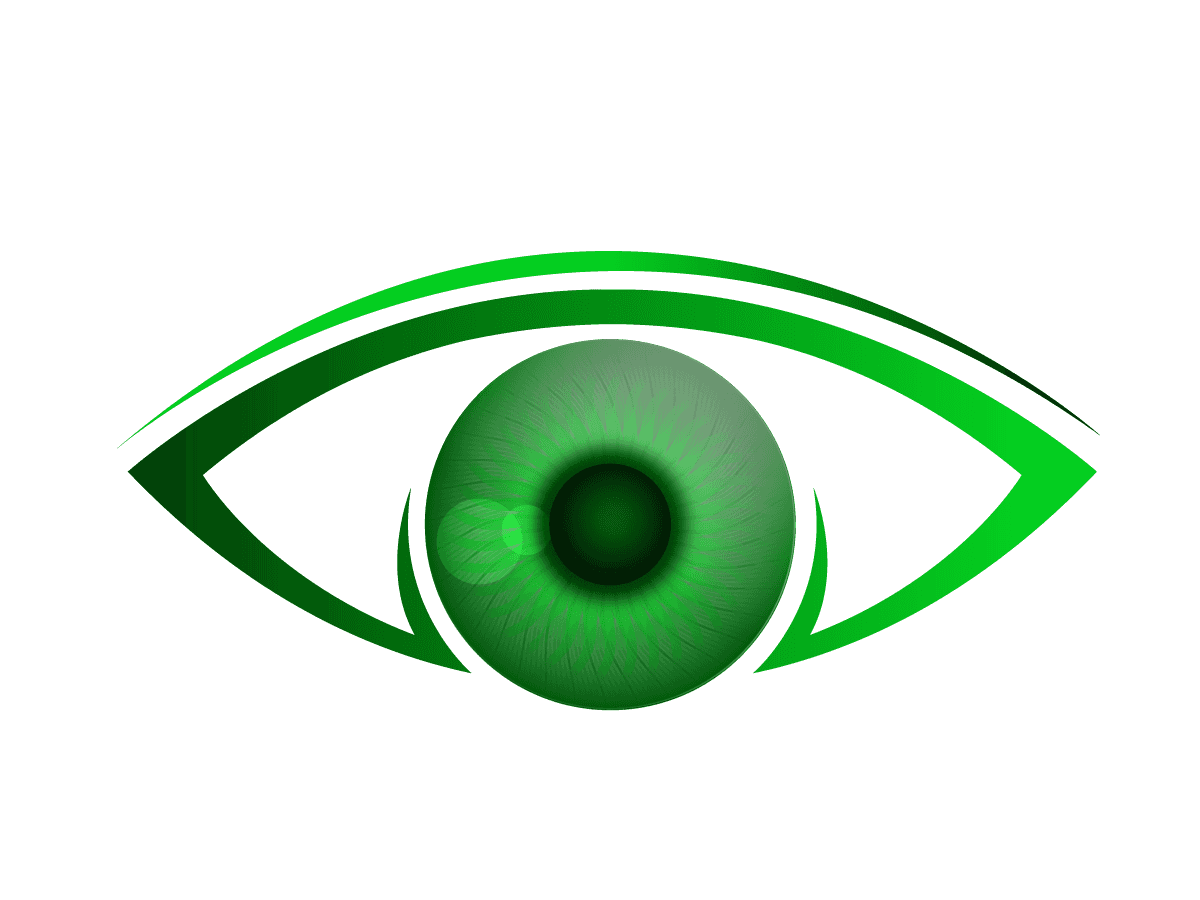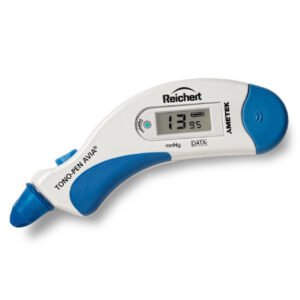Table of Contents
Over 3 million Americans suffer from glaucoma, a progressive eye disease that can lead to blindness. As the second leading cause of blindness worldwide (Source: CDC), early detection and effective management are crucial.
Monitoring intraocular pressure (IOP) is a cornerstone of glaucoma treatment. However, traditional in-office tests often miss daily fluctuations, leaving gaps in care.
Imagine tracking your eye pressure from the comfort of your home. A home tonometer empowers patients to take an active role in managing glaucoma. These devices improve treatment precision by capturing IOP data throughout the day.
This study examines the benefits of home-based tonometer devices for glaucoma. We compare the best models and provide helpful tips for monitoring glaucoma treatment effectively. Please read on to learn about the tools that can help protect your vision.
What Are the Screening Methods for Glaucoma?
Effective glaucoma screening involves a combination of diagnostic tools and tests to ensure early detection and appropriate management. Below is an expanded explanation of the primary methods used.
Tonometry
Tonometry is the gold standard for measuring intraocular pressure (IOP), a key indicator of glaucoma. Elevated IOP can compress and damage the optic nerve, leading to progressive vision loss if left untreated.
Regular tonometry tests, done in the office or at home, can help track pressure changes and check how well treatments are working. Consistent IOP measurements are critical for identifying abnormalities early and preventing irreversible damage.
Visual Field Testing
Peripheral vision loss is often one of the earliest signs of glaucoma. Visual field testing evaluates a patient’s ability to detect objects in their peripheral vision.
Gradual changes in peripheral vision may go unnoticed without this test. This makes it an essential part of glaucoma screening.
Using visual field tests and home eye pressure monitors can help track disease progress and treatment success. These tools provide a clearer picture of how the condition is changing.
Ophthalmoscopy
This diagnostic tool allows ophthalmologists to examine the optic nerve in detail. Changes to the optic nerve, such as cupping or thinning, are often early indicators of glaucoma.
Ophthalmoscopy complements IOP measurements by revealing structural damage that may not be immediately apparent through pressure readings alone. When used with data from glaucoma management devices, ophthalmoscopy helps us understand how the disease affects the eye.
Optical Coherence Tomography (OCT)
OCT provides high-resolution images of the retinal nerve fiber layer. This advanced imaging technique is crucial for detecting early glaucoma-related damage that may not yet affect vision.
OCT measures the thickness of the retinal nerve fibers, offering precise data that can guide treatment decisions. Integrating results from OCT and home, tonometer comparison reports allows for personalized and effective glaucoma management plans.
Pachymetry
Corneal thickness directly influences IOP readings. Pachymetry measures this thickness to ensure accurate pressure readings and help assess glaucoma risk.
Patients with thinner corneas are at a higher risk for glaucoma, even with regular IOP readings.
Using pachymetry results and regular checks from a home tonometer for glaucoma can help assess risk better. This approach allows for early intervention when necessary.
What Are the Benefits of Home Tonometers?
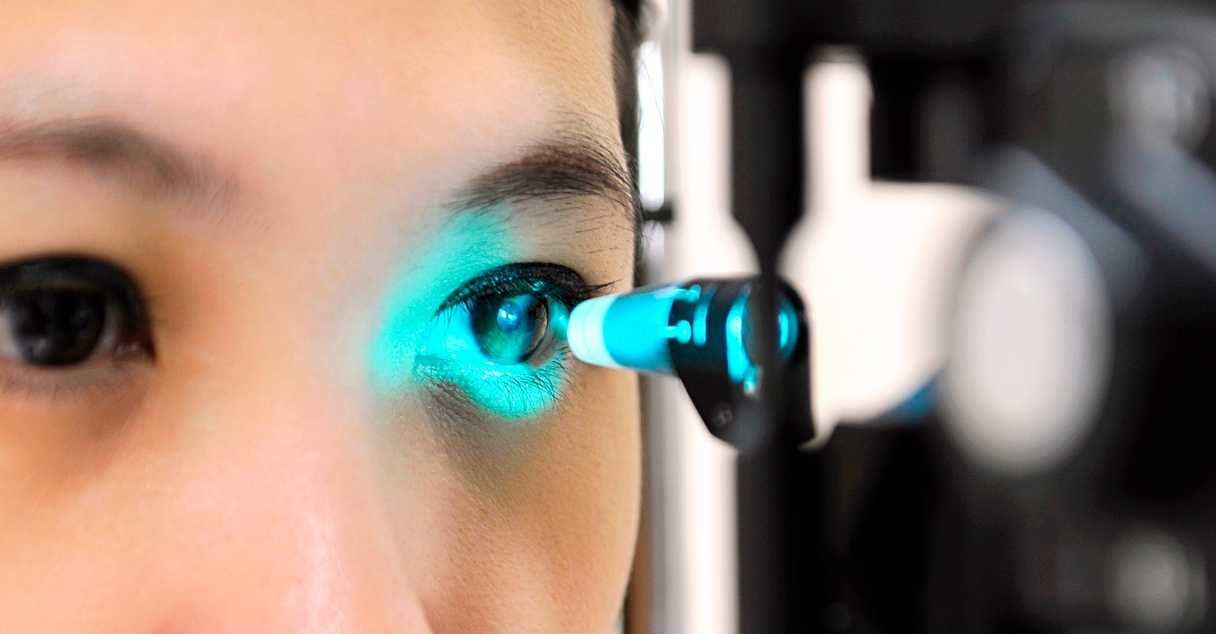
The role of home-based tonometer glaucoma devices extends beyond convenience. These tools are integral to effective disease management. They offer tangible benefits that enhance both patient experience and treatment outcomes.
Increased Frequency of Monitoring
One of the most significant benefits of using a home tonometer is that it lets you measure eye pressure many times daily. Home eye pressure monitors offer a better view of eye pressure changes over the day. Unlike in-office tests, which show just one moment, these monitors track trends continuously.
Glaucoma patients often experience IOP spikes at different times. This change can go unnoticed during routine clinic visits.
Frequent monitoring empowers patients to understand better how their IOP responds to:
- Lifestyle factors
- Medications
- Environmental changes
Early Detection of Abnormalities
Regular use of home-based eye care devices enables patients and doctors to identify concerning patterns early. Elevated or fluctuating IOP readings can signal the need for intervention before permanent optic nerve damage occurs.
Early detection allows doctors to:
- Modify medications
- Consider surgical options
- Recommend other treatments
By catching abnormalities sooner, patients are less likely to experience severe complications. This proactive approach improves the likelihood of preserving vision and maintaining quality of life.
Better Collaboration With Doctors
The data collected by home-based tonometer glaucoma devices facilitates stronger partnerships between patients and healthcare providers. Many devices, such as the iCare HOME2, let users upload their readings to a cloud platform, which doctors can access in real time.
This level of collaboration leads to more personalized care, increasing the effectiveness of glaucoma treatment monitoring.
Reduced Stress and Improved Outcomes
Monitoring eye pressure at home provides a sense of control and reassurance to patients managing glaucoma. It reduces the anxiety of waiting months between appointments to understand how the condition progresses.
Patients can see the immediate impact of treatments and take comfort in knowing they are contributing to their care. Consistent monitoring and timely interventions lead to improved outcomes and a lower risk of vision loss.
Home tonometers enhance glaucoma treatment monitoring and improve overall disease management by bridging the gap between clinical visits.
Best Tonometer for Home Use
Selecting the right home tonometer is essential. Below, we provide a detailed home tonometer comparison, highlighting their features and benefits.
1. iCare HOME2 ($1,099.00)
The iCare HOME2 sets the standard for modern glaucoma management devices. Designed with precision and convenience, it caters to patients who need consistent and reliable home-based eye care. Here’s a closer look at its standout features.
Rebound Technology
The iCare HOME2 uses advanced rebound technology to measure intraocular pressure (IOP) without requiring anesthetics or eye drops. This provides a painless and easy experience. It is suitable for regular use by patients who care about their eye health.
Cloud Integration
Patients can upload their IOP data to a secure online portal. This feature simplifies sharing results with healthcare providers. It enables better collaboration and personalized treatment plans.
Cloud integration also allows patients to monitor trends in their IOP over time, giving them greater control over their glaucoma treatment monitoring.
Ease of Use
With its intuitive design, the iCare HOME2 is accessible to users of all experience levels. Its user-friendly interface ensures accurate readings without requiring extensive training, making it a popular choice for individuals looking to incorporate home eye pressure monitoring into their daily routines.
The iCare HOME2 is ideal for those seeking a combination of:
- Precision
- Comfort
- Ease of use
As a top choice for home tonometer glaucoma devices, it helps patients manage their eye health and improves communication with their doctors.
2. Reichert Tono-Vera Tonometer ($2,200.00)
The Reichert Tono-Vera is an innovative solution for patients and professionals who value accuracy and simplicity. Its features make it a top contender in home tonometer comparison.
Active View Technology
This technology assists users in targeting the exact spot needed for precise IOP measurements. The real-time guidance ensures that readings are accurate and consistent, reduces user error, and improves confidence in the results.
Portability
The Reichert Tono-Vera weighs less than many other tonometers. It is lightweight and portable, and its compact design makes it easy to store and transport, ensuring it fits into any lifestyle.
Low Maintenance
Built to last, the Tono-Vera is designed with durability in mind. Its strong design reduces the need for regular servicing or part replacements, providing long-lasting reliability for monitoring treatment response.
The Reichert Tono-Vera combines advanced features with easy use. It is a trusted tool for patients and healthcare providers. Its innovative design ensures it remains a valuable asset in home-based eye care.
3. Reichert Tono-Pen AVIA ($1,590.00)
The Reichert Tono-Pen AVIA is a popular choice for clinics and homes. It is recognized for its strong performance and reliability. Here’s what sets it apart as a leading home tonometer.
Compact Design
This handheld device is designed for maximum convenience. Its small size makes it easy to:
- Use
- Store
- Transport
This makes it perfect for patients needing frequent IOP measurements at home or on the go.
Accuracy
Equipped with cutting-edge technology, the Tono-Pen AVIA provides consistently precise readings. This makes it an excellent choice for patients who require detailed and reliable glaucoma treatment monitoring data.
Proven Performance
Eye care professionals and patients trust the Tono-Pen AVIA. It has a long-standing reputation for excellence. Its reliability in diverse conditions makes it one of the most versatile options in glaucoma management devices.
The Tono-Pen AVIA offers a good mix of accuracy, durability, and convenience. It is a reliable and easy-to-use tool for patients.
4. Icare ic100 Tonometer ($1,550.00)
The Icare ic100 is a versatile device that prioritizes patient comfort and efficiency. A top-tier choice for home-based tonometer glaucoma monitoring exists. Let’s look at the key features.
Quick Measurements
The IC100 delivers fast and reliable IOP readings, typically within seconds. This speed ensures patients can measure their eye pressure multiple times daily without interrupting their daily routines.
Rebound Technology
Like the iCare HOME2, the ic100 utilizes rebound technology for anesthetic-free measurements. This innovation ensures a painless and non-invasive experience, making it ideal for patients of all ages.
Durability
The IC100 is built from high-quality materials and is designed for long-term use. Its robust construction ensures that it remains functional and accurate over years of consistent monitoring.
The Icare ic100 is efficient and reliable. It is a trusted device for patients who want to monitor their eye pressure at home. Its user-friendly features enhance the patient experience while delivering precise results.
What Instrument Can I Use to Check My Eye Pressure at Home?

Monitoring your eye pressure at home requires the right tools for accuracy and ease of use. Below, we explore some of the best options for handheld tonometer glaucoma management:
- Ease of use: Designers create devices like the iCare HOME2 and Reichert Tono-Vera to be simple, making them suitable for patients of all ages.
- Portability: Compact models like the Tono-Pen AVIA are great for travelers or people with little storage space.
- Cost and maintenance: While some devices may have higher upfront costs, their accuracy and long-term reliability offer excellent value
Nava Ophthalmic, located in the U.S., specializes in providing top-tier glaucoma management devices like the:
- iCare HOME2
- Reichert Tono-Vera
- Tono-Pen AVIA
They also offer expert guidance to help patients choose the right device.
Monitoring of Glaucoma Using a Home Tonometer
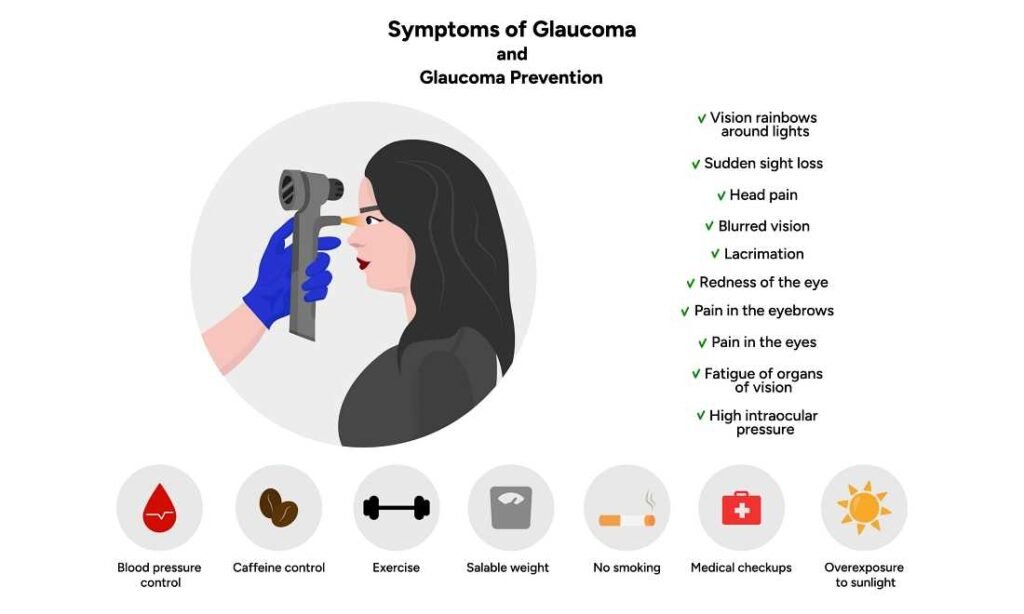
Effective use of a home tonometer requires consistency and collaboration. Here’s how to make the most of your device.
Establish a Monitoring Routine
Measure IOP at regular intervals, such as morning and evening. Keep a detailed log of readings for review during doctor visits.
Understand Your Target Range
Work with your ophthalmologist to determine your ideal IOP range. Also, use your home eye pressure monitor to ensure your readings stay within this range.
Combine With Regular Clinical Visits
Home monitoring complements but does not replace in-office tests. Schedule periodic visits to ensure comprehensive eye health assessments.
Respond to Fluctuations
Sudden changes in IOP may indicate a need for treatment adjustments. Be sure to share your data with your healthcare provider.
Frequent monitoring with a home-based tonometer glaucoma device improves treatment precision. It ensures better outcomes for patients.
The Importance of Technology in Glaucoma Management
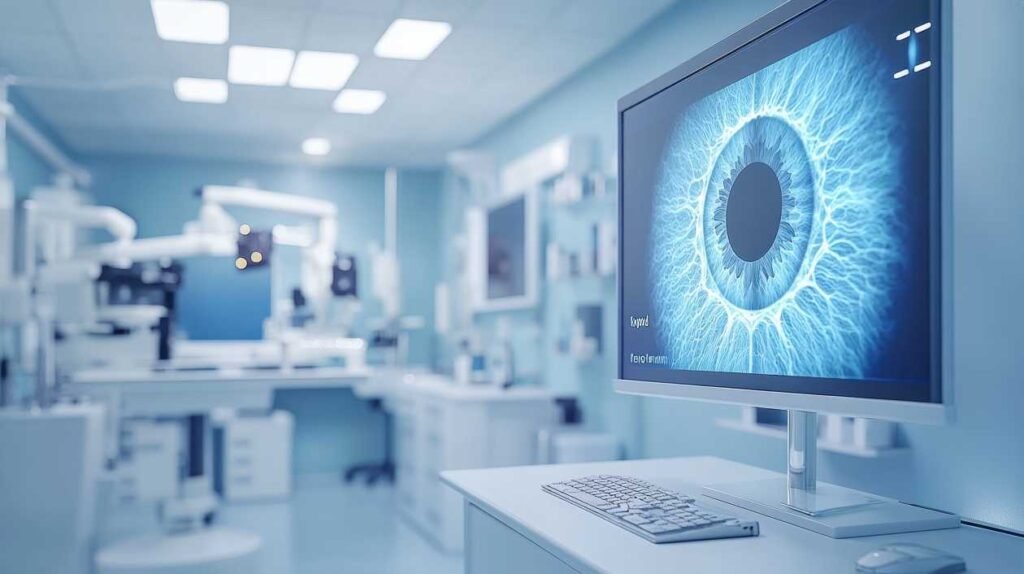
Advancements in home-based eye care have transformed the landscape of glaucoma management. Devices like the iCare HOME2 help patients manage their condition and give doctors important data for personalized care plans.
Comparing tonometer technologies highlights the importance of choosing tools that balance:
- Accuracy
- Comfort
- Accessibility
Innovations like cloud-based data sharing and rebound technology make monitoring treatment response more effective.
Improve Glaucoma Treatment With the Right Home Tonometer
Monitoring eye pressure regularly is key to managing glaucoma. A home tonometer empowers patients to take charge of their eye health. It provides accurate and timely data to support effective treatment.
Nava Ophthalmic provides various home eye care solutions, including reliable devices like the iCare HOME2, Reichert Tono-Vera, and Tono-Pen AVIA. Our commitment to innovation ensures patients receive the best tools for managing glaucoma at home.
Explore Nava Ophthalmic’s collection of tonometers and find the right device for your needs.

Matthew Strachovsky, M.D.
Dr. Strachovsky's undergraduate training began in Boston, Massachusetts at Boston University and was completed at Stony Brook University in Long Island, NY. There he graduated Summa Cum Laude, obtaining a Bachelor of Science degree in Biology with special recognition for academic achievement.
He continued his education at Stony Brook School of Medicine and graduated with the additional designation of the "MD with Recognition" program. He worked as an intern in Internal Medicine at Winthrop University Hospital in NY and pursued a residency at Stony Brook University Hospital in Ophthalmology acting as Chief Resident in his final year. He completed his fellowship training in Vitreoretinal disease with a major emphasis on the diagnosis and management of retinal vascular diseases under the direction of Dr. Michael O'Brien at Koch Eye Associates in Rhode Island.
Dr. Strachovsky has presented research at the annual Association for Vision and Research in Ophthalmology meeting and published articles in journals including, Investigative Ophthalmology and Visual Science and The Journal of Neuro-ophthalmology.
Dr. Strachovsky's professional interests include the management of Age-Related Macular Degeneration and diabetic eye disease. He is Board Certified in Ophthalmology and a member of the American Academy of Ophthalmology, American Society of Retina Specialists, Young Ophthalmologist Network, and Leading Physicians of the World.
" I believe that the physician/patient relationship is more important than ever. Being an Ophthalmologist allows me to help patients and build a foundation of trust, knowledge, and professionalism when it comes to eye care".
